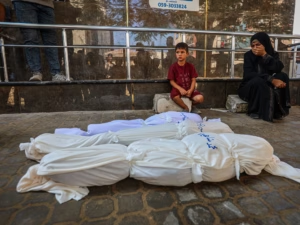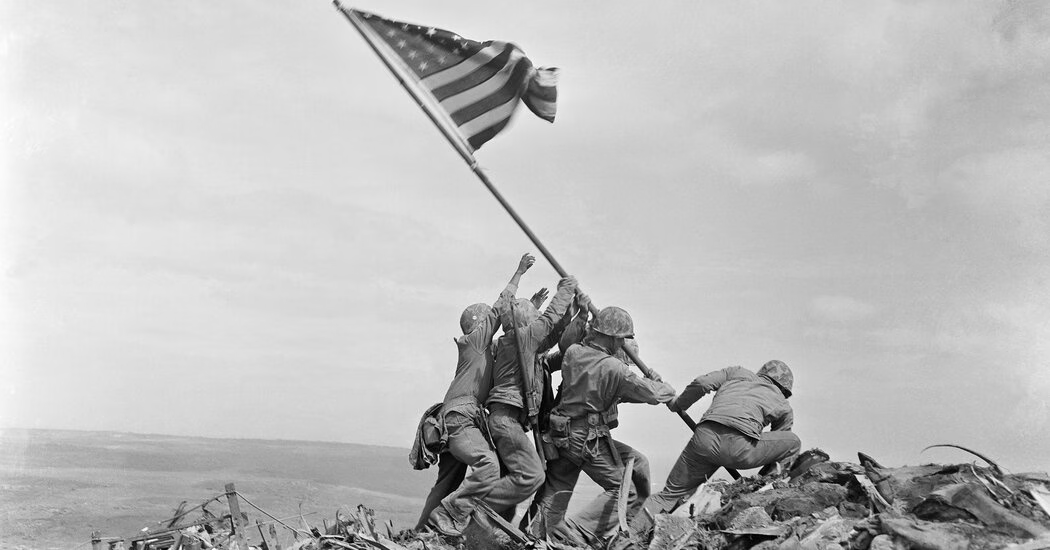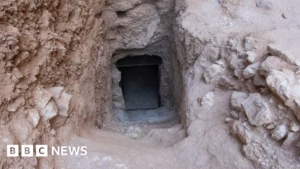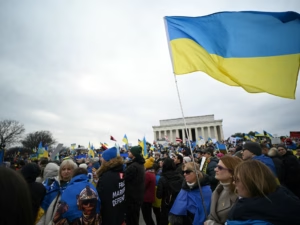Iwo Jima, a volcanic rock surrounded by cobalt sea, holds a beautiful landscape. However, a World War II battle that took place 80 years ago turned this Japanese island into a symbol of desperate and deadly combat, as well as American triumph. On February 23, 1945, American Marines climbed Mount Suribachi, the highest point of Iwo Jima, and raised an American flag, capturing an iconic image by Associated Press photographer Joe Rosenthal.
My father, Keyes Beech, was also present on that isolated island in the Pacific Ocean. As a technical sergeant attached to the U.S. Marine Corps Fifth Division, his job as a combat correspondent was to write about American valor and hopefully, victory. However, the conquest of Iwo Jima did not come easily, despite the famous flag-raising four days into the battle, and continued for another month.
On the day the Stars and Stripes were raised on Mount Suribachi, twice for good measure, my father recounted being jammed in a foxhole, trying to avoid getting killed by the Japanese. Unfortunately, this fate would eventually befall one of his friends, and then another, and another.
The Americans and Japanese were trapped in a small space, eight square miles, about the size of a busy international airport today. Iwo Jima means “sulfur island” in Japanese, and the Japanese Imperial army had fortified its caves with tunnels and other defenses. The island smoldered, and its bluffs and beaches became a vast cemetery, with volcanic ash and black sand burying the dead.
About 70,000 American soldiers fought to take Iwo Jima, resulting in the deaths of over 6,500. Out of the 20,000 Japanese defending the island, approximately 19,000 were killed in combat. Some died in a final banzai charge, while others chose to end their own lives rather than surrender to the Americans. Two soldiers even hid in the caves until 1949, emerging to a changed world four years after the war had ended.
On March 26, 1945, Iwo Jima was officially captured by the Americans. Less than five months later, the Japanese emperor surrendered, marking the end of the imperial march across Asia that had claimed millions of lives. The United States eventually built a military base on Iwo Jima, but in 1968, the island was returned to Japan. The evacuated Japanese villagers never returned, and in 2007, the island was officially renamed Iwo To, using a different pronunciation of the word “island.”
My father, like many veterans of that generation, rarely spoke of World War II. However, Iwo Jima left a profound impact on him. He covered other battles in the Pacific theater, but it was Iwo that seemed to pierce him the most. He joined a war bond tour in the United States with some of the flag-raising soldiers to drum up financial support for what turned out to be the waning days of World War II. They drank excessively, as it was the norm back then. The term for “post-traumatic stress disorder” did not exist.
When I was in middle school, we would sometimes drive past the Marine Corps War Memorial, featuring the bronze statue of Mr. Rosenthal’s iconic photo. My father would become quiet, one hand staying on the steering wheel while the other gripped my hand. I knew to squeeze back.
Source: https://www.nytimes.com/2025/02/23/world/asia/the-battle-of-iwo-jima-a-history.html





